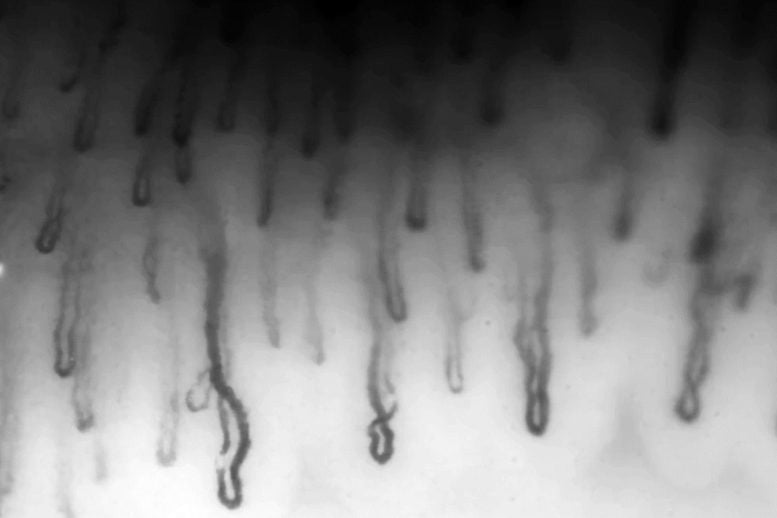
Leuko, founded by a research team at MIT, is giving doctors a noninvasive way to monitor cancer patients’ health during chemotherapy — no blood tests needed.
Chemotherapy and other treatments that take down cancer cells can also destroy patients’ immune cells. Every year, that leads tens of thousands of cancer patients with weakened immune systems to contract infections that can turn deadly if unmanaged.
Doctors must strike a balance between giving enough chemotherapy to eradicate cancer while not giving so much that the patient’s white blood cell count gets dangerously low, a condition known as neutropenia. It can also leave patients socially isolated in between rounds of chemotherapy. Currently, the only way for doctors to monitor their patients’ white blood cells is through blood tests.
Innovations in Health Technology
Now Leuko is developing an at-home white blood cell monitor to give doctors a more complete view of their patients’ health remotely. Rather than drawing blood, the device uses light to look through the skin at the top of the fingernail, and artificial intelligence to analyze and detect when white blood cells reach dangerously low levels.
The technology was first conceived by researchers at MIT in 2015. Over the next few years, they developed a prototype and conducted a small study to validate their approach. Today, Leuko’s devices have accurately detected low white blood cell counts in hundreds of cancer patients, all without drawing a single drop of blood.

Personal and Regulatory Advancements
“We expect this to bring a clear improvement in the way that patients are monitored and cared for in the outpatient setting,” says Leuko co-founder and CTO Ian Butterworth, a former research engineer in MIT’s Research Laboratory of Electronics. “I also think there’s a more personal side of this for patients. These people can feel vulnerable around other people, and they don’t currently have much they can do. That means that if they want to see their grandkids or see family, they’re constantly wondering, ‘Am I at high risk?’”
The company has been working with the Food and Drug Administration (FDA) over the last four years to design studies confirming their device is accurate and easy to use by untrained patients. Later this year, they expect to begin a pivotal study that will be used to register for FDA approval.
Future Potential and Broader Applications
Once the device becomes an established tool for patient monitoring, Leuko’s team believes it could also give doctors a new way to optimize cancer treatment.
“Some of the physicians that we have talked to are very excited because they think future versions of our product could be used to personalize the dose of chemotherapy given to each patient,” says Leuko co-founder and CEO Carlos Castro-Gonzalez, a former postdoc at MIT. “If a patient is not becoming neutropenic, that could be a sign that you could increase the dose. Then every treatment could be based on how each patient is individually reacting.”
Monitoring Immune Health
Leuko co-founders Ian Butterworth, Carlos Castro-Gonzalez, Aurélien Bourquard, and Alvaro Sanchez-Ferro came to MIT in 2013 as part of the Madrid-MIT M+Vision Consortium, which was a collaboration between MIT and Madrid and is now part of MIT linQ. The program brought biomedical researchers from around the world to MIT to work on translational projects with institutions around Boston and Madrid.
The program, which was originally run out of MIT’s Research Laboratory of Electronics, challenged members to tackle huge unmet needs in medicine and connected them with MIT faculty members from across the Institute to build solutions. Leuko’s founders also received support from MIT’s entrepreneurial ecosystem, including the Venture Mentoring Service, the Sandbox Innovation Fund, the Martin Trust Center for Entrepreneurship, and the Deshpande Center. After its MIT spinout, the company raised seed and series A financing rounds led by Good Growth Capital and HTH VC.
“I didn’t even realize that entrepreneurship was a career option for a PhD [like myself],” Castro-Gonzalez says. “I was thinking that after the fellowship I would apply for faculty positions. That was the career path I had in mind, so I was very excited about the focus at MIT on trying to translate science into products that people can benefit from.”
Leuko’s founders knew people with cancer stood to benefit the most from a noninvasive white blood cell monitor. Unless patients go to the hospital, they can currently monitor only their temperature from home. If they show signs of a fever, they’re advised to go to the emergency room immediately.
“These infections happen quite frequently,” Sanchez-Ferro says. “One in every six cancer patients undergoing chemotherapy will develop an infection where their white blood cells are critically low. Some of those infections unfortunately end in deaths for patients, which is particularly terrible because they’re due to the treatment rather than the disease. [Infections] also mean the chemotherapy gets interrupted, which increases negative clinical outcomes for patients.”
Leuko’s optical device works through imaging the capillaries, or small blood vessels, just above the fingernail, which are more visible and already used by doctors to assess other aspects of vascular health. The company’s portable device analyzes white blood cell activity to detect critically low levels for care teams.
In a study of 44 patients in 2019, Leuko’s team showed the approach was able to detect when white blood cell levels dropped below a critical threshold, with minimal false positives. The team has since developed a product that another, larger study showed unsupervised patients can use at home to get immune information to doctors.
“We work completely noninvasively, so you can perform white blood cell measurements at home and much more frequently than what’s possible today,” Bourquard says. “The key aspect of this is it allows doctors to identify patients whose immune systems become so weak they’re at high risk of infection. If doctors have that information, they can provide preventative treatment in the form of antibiotics and growth factors. Research estimates that would eliminate 50 percent of hospitalizations.”
Expanding Applications
Leuko’s founders believe their device will help physicians make more informed care decisions for patients. They also believe the device holds promise for monitoring patient health across other conditions.
“The long-term vision for the company is making this available to other patient populations that can also benefit from increased monitoring of their immune system,” Castro-Gonzalez says. “That includes patients with multiple sclerosis, autoimmune diseases, organ transplants, and patients that are rushed into the emergency room.”
Leuko’s team even sees a future where their device could be used to monitor other biomarkers in the blood.
“We believe this could be a platform technology,” Castro-Gonzalez says. “We get these noninvasive videos of the blood flowing through the capillaries, so part of the vision for the company is measuring other parameters in the blood beyond white blood cells, including hemoglobin, red blood cells, and platelets. That’s all part of our roadmap for the future.”